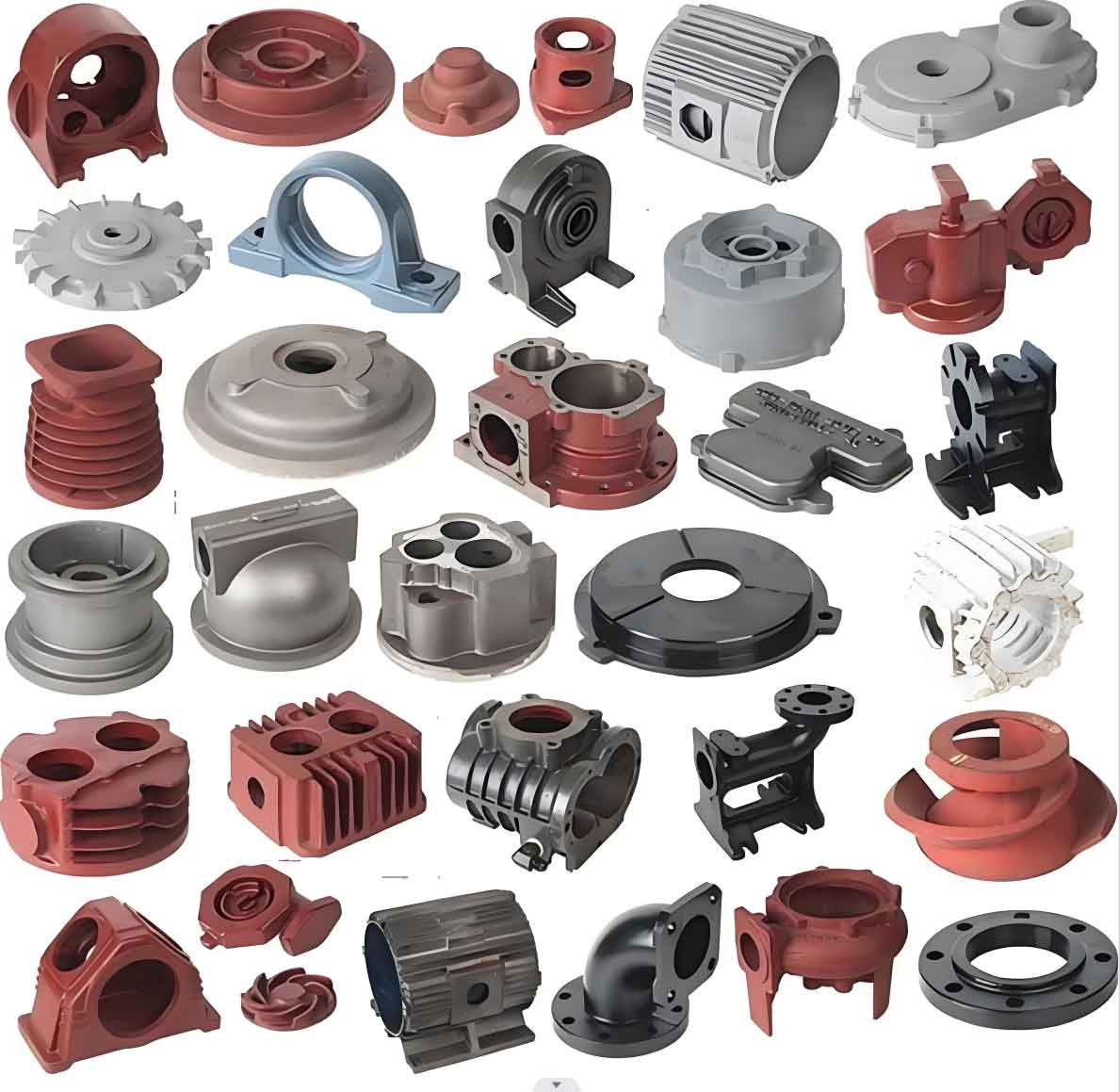The wear resistance of ductile cast iron can be significantly influenced by the addition of various alloying elements. These elements modify the microstructure and mechanical properties of ductile cast iron, enhancing its performance in demanding applications. Here’s a detailed overview of the impact of key alloying elements on the wear resistance of ductile cast iron:

Key Alloying Elements and Their Effects
- Silicon (Si)
- Role: Primarily used to improve the formation of graphite nodules and enhance ferrite stability.
- Impact on Wear Resistance: Silicon increases hardness and strength, contributing to improved wear resistance. It also helps in forming a more stable matrix, reducing the likelihood of micro-cracks that can initiate wear.
- Nickel (Ni)
- Role: A powerful austenite stabilizer that enhances toughness and strength.
- Impact on Wear Resistance: Nickel increases hardness and strength by promoting a pearlitic or bainitic matrix, which is more wear-resistant than a ferritic matrix. It also improves corrosion resistance, which can indirectly enhance wear resistance in corrosive environments.
- Chromium (Cr)
- Role: Enhances hardenability and resistance to oxidation and corrosion.
- Impact on Wear Resistance: Chromium forms carbides (such as Cr7C3), which are extremely hard and improve wear resistance by providing a hard, wear-resistant phase within the matrix. It also refines the pearlite structure, increasing overall hardness.
- Molybdenum (Mo)
- Role: Enhances hardenability and high-temperature strength.
- Impact on Wear Resistance: Molybdenum forms hard carbides (such as Mo2C) and strengthens the matrix by promoting a bainitic or martensitic structure. This significantly enhances wear resistance, especially under high-stress and high-temperature conditions.
- Copper (Cu)
- Role: Used to strengthen the matrix through solid solution strengthening.
- Impact on Wear Resistance: Copper enhances the pearlitic structure, increasing hardness and wear resistance. It also improves corrosion resistance, which helps in environments where wear and corrosion occur simultaneously.
- Vanadium (V)
- Role: Strong carbide former that refines grain structure.
- Impact on Wear Resistance: Vanadium forms very hard vanadium carbides (VC), which improve wear resistance by providing a hard, wear-resistant phase. It also refines the microstructure, leading to a more uniform and tough matrix.
Microstructural Modifications
- Pearlitic Matrix:
- Alloying elements like nickel, copper, and chromium promote a pearlitic matrix, which consists of alternating layers of ferrite and cementite. This structure is harder and more wear-resistant than a purely ferritic matrix.
- Bainitic and Martensitic Matrices:
- Elements such as molybdenum and chromium can help form bainitic or martensitic structures, which offer superior wear resistance due to their higher hardness and strength.
- Carbide Formation:
- Chromium, molybdenum, and vanadium form hard carbides that significantly enhance wear resistance by providing dispersed, hard phases within the matrix that resist abrasion and wear.
Practical Implications
- Selection of Alloying Elements:
- The choice of alloying elements depends on the specific wear conditions and the required balance between wear resistance, toughness, and other mechanical properties.
- Heat Treatment:
- The effectiveness of alloying elements in improving wear resistance is often enhanced by appropriate heat treatment processes, such as austempering, which can optimize the microstructure.
- Application-Specific Alloying:
- For applications involving high abrasion, elements like chromium and vanadium are preferred for their carbide-forming ability.
- For applications requiring a balance of wear resistance and toughness, nickel and molybdenum are beneficial.
Conclusion
The wear resistance of ductile cast iron can be significantly enhanced by the strategic addition of alloying elements. These elements modify the microstructure by promoting harder phases such as pearlite, bainite, and martensite, and by forming hard carbides that resist wear. Understanding the role of each alloying element allows for the design of ductile cast iron with tailored properties for specific applications, ensuring optimal performance and longevity.
